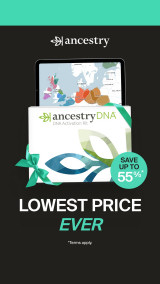Workhouse Births and Baptisms
Parish Records
The parish and other workhouses that operated prior to the 1834 Poor Law Amendment Act had no systematic procedures for recording events such as births or deaths that took place within their walls. In cases where such registers existed, their survival is very rare. Prior to the introduction of the national civil registration system in England and Wales in 1837, therefore, the primary source of information about the life events of poor people are church records. These include not only those of the Church of England but also of the Roman Catholic Church, and also non-conformist churches such as the Methodists.
In the case of the Church of England, baptismal registers form one of the standard records maintained by each parish. Although there was no formal system of registering births, it was common practice for a child's date of birth to be recorded in its baptism entry, with the parents' names also being recorded. However, the birth date provided in such entries may not necessarily be accurate or may be noted as being only approximate.
Although civil registration of births was compulsory from 1837, penalties for non-registration were not introduced until 1874, so post-1837 parish records continue to be of value.
An increasing number of church/parish records, including baptism records, are now online, for example:
- FamilySearch — free
- The Genealogist — good on Catholic/non-conformist records
- Ancestry
— good on London records
- The Society of Genealogists
- The FreeREG Project
- BMDRegisters
- UKBMD — Local indexes for England and Wales
- Online Parish Clerks
- Scotland's People — for Scottish Ancestors
- Roots Ireland — for Irish Ancestors
Many parish registers have been transcribed by family history societies and published in various formats such as booklet or CD — many of these are available from sources such as S&N Genealogy Supplies and the GENfair online store.
Civil Registration and Poor Law Union Records
The new national civil registration system, which came into operation on 1st June 1837, divided England and Wales into 27 numbered regions. These were each then subdivided into registration districts under the control of Superintendent Registrars. In 1851, there were 623 registration districts which, for the most part, coincided with the boundaries of poor law unions. Register offices in many unions were located adjacent to union workhouses.
Births in union workhouses were normally registered by the workhouse master with the local registrar for the district where the workhouse was located. This was in addition to it being recorded in the workhouse's own birth register.
Unless a workhouse had its own chapel that was sanctioned for such purposes, the baptism of workhouse infants was usually performed at the local parish church. Where a workhouse had a separate chapel, records of baptisms might be kept by the workhouse itself or could form part of the baptismal registers for the parish where the workhouse was located.
In 1904, in an attempt to remove the stigma of having been born in a workhouse, the Registrar General recommended that the registration of such events should not identify their location as being a workhouse. Instead, a euphemistic or fictitious address was used instead. At Leek, for example, the workhouse adopted the official address of "251 Ashbourne Road, Leek" although it physically lay between numbers 115 and 121 Ashbourne Road. Many of these addresses are listed on the separate addresses page.
In summary, then, from 1837 onwards there are three main potential sources of information about a workhouse birth:
- A civil regsitration record of the birth
- A workhouse record of the birth, and possibly also a baptism
- A possible church record of the baptism
Civil registration records are not themselves publicly viewable, only the indexes to them. Each index entry gives the person's name, the registration district, and the three-month quarter in which it took place. Too see the full details, copies of the birth certificate must purchased, either from the local register office concerned, or from the relevant General Register Office:
Websites holding civil registration birth indexes include:
- FreeBMD (free but incomplete)
- UKBMD (links to local register offices that have online index searching)
-
Ancestry UK
- Find My Past
- Genes Reunited
- The Genealogist
Some websites which provide online versions of the birth indexes also provide an online certificate ordering service.
Websites holding at least some post-1834 union workhouse birth and baptism registers include:
-
Ancestry UK
— particularly good for London workhouses
- Find My Past
- FamilySearch
Some workhouse birth and baptism registers have been transcribed by family history societies and published in various formats such as booklet or CD — many of these are available from sources such as S&N Genealogy Supplies and the FFHS GENfair online store.
Unless otherwise indicated, this page () is copyright Peter Higginbotham. Contents may not be reproduced without permission.



